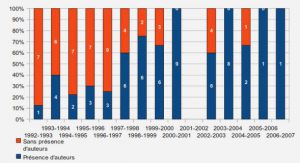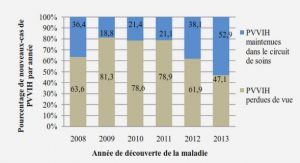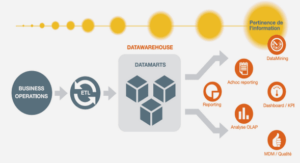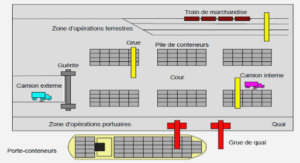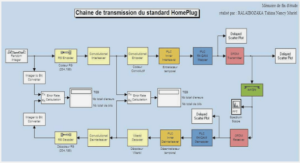A MODEL OF INDIVIDUAL INNOVATION
Innovation has been defined in many ways and has been related to the person, the process and the product. The diversity in the definition of innovation has entailed several ambiguities and incongruences in empirical research on entrepreneurship and innovation. The methods and approaches used by researchers to measure and assess innovation are highly influenced by the definition they give to this concept. In much of the literature on entrepreneurship, innovation has been assessed and measured mainly as an outcome: patent count, citations per patent and R&D expenditures (Galasso & Simcoe, 2011; Hirshleifer et al., 2012). Although these variables could reflect somehow the degree of innovation of a venture, they are not completely reliable (e.g. a venture might have high R&D expenditures but still not be innovative, or a company can be highly innovative and not have an important number of patents). This is especially true in entrepreneurial ventures, since usually this type of firm has more limited access to resources and the cost of these activities remains high. Also, this kind of measures ignores any other type of innovation that is not technological. Moreover, these constructs do not reflect individual innovation processes. In order to understand how individuals ‘create’ innovations, it is necessary to begin by clarifying what we mean by ‘innovation’. While some authors have focused on the generation of ideas to define innovation (Drucker, 1985; Zaltman, Duncan, & Holbek, 1973), we built on a more current and widely accepted definition that focuses on the implementation of novel ideas. Van den Ven (1986) defined individual innovation as the “development and implementation of new ideas by people who over time engage with others within an institutional context” (p. 591). Kanter (1984) is more explicit about the role of both idea generation and implementation and he defines innovation “as the generation, acceptance and implementation of new ideas, processes, products or services” Similarly, Shane and Venkataraman (Shane & Venkataraman, 2000) argue that, for individual innovation to occur, entrepreneurs must: i) recognize and interpret the information available to identify the opportunity, ii) possess the cognitive properties and skills to evaluate the opportunity and iii) The bridge between creativity and innovation have the willingness and required skills to exploit that specific opportunity. Following these same lines, Baer (2012) defines innovation as a process that encompasses both the generation of novel ideas and the effective implementation of these ideas in the real world. Since creativity refers to the generation of novel and useful ideas or solutions (Amabile, 1983; Heap, 1989; Plsek, 1997; Rodney McAdam & John McClelland, 2002), we suggest that creativity is a crucial part of the innovation process. In this sense we support the assumptions made by Baer (2012) that implementation cannot occur unless creative ideas are generated. However, being able to innovate means being able to go beyond the generation of ideas. It requires making the decision of going further in the process and investing time, effort andmoney to finally implement these ideas. This decision of going further depends on whether or not the individual advocates that an opportunity for that idea exists in the market that is feasible and personally desirable to be pursued (Krueger, 2000, 2003). In fact, an individual will not act if he is not confident enough that there is an interesting opportunity available for him from which to profit from (Dimov, 2007; Grégoire et al., 2010, 2011; McMullen & Shepherd, 2006). Because implementing an innovation requires action, then the ability to evaluate opportunities plays a crucial role in the decision and ability to implement a creative idea. Furthermore, being able to discern good opportunities from bad should increase the chances that a creative idea is effectively implemented.
Creativity: the generation of novel and useful ideas
“There will be no innovation…without creative ideas from individuals, you need ideas before you can develop and implement them”(Amabile, 1988: 151). The first stage of innovation relies on the generation of creative ideas, regardless of whether the ideas are generated for solving a specific predefined issue or if the issue comes after brainstorming. At this stage, entrepreneurs are faced either with a problem or market need gap to address, or with a general thematic for which they generate ideas and finally identify the need or problem these ideas could address. In this part of the process, entrepreneurs must be able to empathize with the external world (see Design thinking process), interpret external information and be in the continuous search (or be alert) for market needs, gaps and issues (or signals). In the literature, creativity has been defined in numerous ways. Nonetheless, the aspects of newness and usefulness appear to be at the core of most definitions. According to Amabile (1983): “A product or response will be judged as creative to the extent that (a) it is both a novel and appropriate, useful, correct, or valuable response to the task at hand and (b) the task is heuristic rather than algorithmic” (p. 360). The creation of novel and useful ideas includes the recombination and rearrangement of knowledge (Plsek, 1997) and/or the reimagination of existing objects (Heap, 1989). Also, creativity refers to both the process of idea generation and learning or problem-solving and the actual idea or solution resulting from it (Amabile, Barsade, Mueller, & Staw, 2005; Rodney McAdam & John McClelland, 2002). As put forward by Amabile (1983), individual creativity relies on three main components: i) domain-relevant skills, which include experience, prior knowledge and innate abilities; ii) creativity-relevant skills, which refer to cognitive style, personal characteristics, among others; and iii) task motivation, which involves one’s attitude towards the task or the ‘desirability’. This framework suggests that different configurations of these three elements lead to different degrees of creativity. Differences in individual creativity might be explained by the fact that people use information differently and that the processes to interpret, categorize and stock that information differ from one individual to another (Baron, 2007; Ward, Smith, & Finke, 1998).
Opportunity evaluation for creative ideas
The evaluation of ideas is a crucial task for the innovation process. Entrepreneurs must be able to discern which ideas represent potential opportunities for innovations. Moreover they have to assess them as personally appealing as they decide whether it is worth investing, time, effort and money in them (Williams & Wood, 2015). Before deciding to implement a specific idea generated from the creativity process, an individual must judge its implementation to be desirable and feasible (Krueger, 2000, 2003; Krueger & Brazeal, 1994; Shane & Venkataraman, 2000; Shapero, 1982). These two concepts of desirability and feasibility are what defines an entrepreneurial opportunity (Stevenson & Jarillo, 1990). Desirability refers to the perceived value retrieved from the potential outcomes of pursuing the opportunity. It relates to both intrinsic interest in implementing the opportunity and the extrinsic motivation driven by the society’s perceived value of the opportunity (Krueger & Brazeal, 1994). The feasibility concept instead refers to the practicability of the opportunity. It covers both the personal abilities and skills needed for implementing the opportunity and the difficulty related to the opportunity itself (competition, adoption cycle, financial needs) (Krueger, 2003; Krueger & Brazeal, 1994; Tumasjan et al., 2013). Passing from idea generation to its implementation requires making a decision of going further in the process and investing time, effort and money. This decision is strongly influenced by whether the individual judges that an opportunity for that idea exists (or not) for him and for the market (Bryant, 2007; Krueger & Dickson, 1994; Krueger, 2000; Tumasjan et al., 2013). Here, the entrepreneur has to evaluate the potential of the idea and identify whether there is or not an opportunity that he can pursue. This evaluation includes tasks such as The bridge between creativity and innovation concept testing, market analysis, financial forecast, organizational assessment, and any other analyses carried out before finally deciding to launch and implement the idea. Opportunity evaluation requires a strong implication of the individual, since it requires investing time, effort and money to determine whether the opportunity (if any) is worthy of further investment for its final implementation. Thus, the importance of desirability and feasibility concepts explained earlier. Cognition plays an essential role in the evaluation process of an idea, since the perceptions of desirability and feasibility are strongly influenced by thinking style, mental frameworks and knowledge structures. Depending on which schema, opportunity or threat, individuals rely more strongly, an idea would be judged as an opportunity (or not) since it is controllable (feasibility) and personally (and socially) desirable (Krueger, 2000; Krueger & Brazeal, 1994).
Idea, opportunity and innovation
Behind any innovation there is always a creative idea. Before any successful implementation of new products, services, business or processes is possible, individuals and teams must come up with novel and useful ideas and then decide to go further to gather the necessary resources and support to implement them (Amabile, 1983; Baer, 2012; Sarooghi et al., 2015; Scott, Shu, & Lubynsky, 2015; Scott & Bruce, 1994). Whereas there is agreement on the definitions of both concepts of creativity and innovation, a lack of clear understanding of their boundaries has blurred the findings of past research. Despite acknowledging that creativity and innovation are two distinct concepts, previous work has often failed to distinguish between them in its theoretical discourse and in its empirical analyses. Creativity refers to the generation of “novel and useful” ideas (Amabile, 1983) whereas innovation refers to not only the generation of those ideas but their implementation in the marketplace (Axtell et al., 2000; Bharadwaj & Menon, 2000; Rosing, Frese, & Bausch, 2011; Scott & Bruce, 1994). Thus, innovation involves both creative idea generation (creativity) and its implementation (Baer, 2012). While the link between creativity and innovation has been studied in the past, most research has assumed their relationship as linear and straightforward, but the empirical results show that the strength of the relation between the two is influenced by other factors, and that being creative does not imply being able to implement an innovation (Baer, 2012; Sarooghi et al., 2015). This might be explained by the fact that both the generation and implementation of creative ideas require different skills, mental processes and behavior that sometimes might even be opposing. For example, creativity implies searching for problems, gaps and solutions, thinking divergently and having explorative behavior. On the other hand, implementation requires gathering external support and resources, possessing the skills and social relationships to ultimately exploit these ideas. This suggests that while being creative is crucial, for innovation to occur, additional skills and behavior are required. Moreover, passing from idea generation to its implementation requires making a decision of going further in the process and investing time, effort and money. This decision is strongly influenced by whether the individual judges that an opportunity for that idea exists (or not) in the market that is feasible and personally desirable to pursue (Krueger, 2000, 2003). Because implementing an innovation requires action, and an individual will not act if he is not confident enough that there is an appealing opportunity available for him to profit from (Dimov, 2007; Grégoire et al., 2010, 2011; McMullen & Shepherd, 2006), the ability to evaluate opportunities plays an important role in implementation and should increase the The implementation of creative ideas chances that a creative idea is effectively implemented. Following these considerations, we suggest the following hypotheses: H1a. The entrepreneur’s degree of creativity is positively related to the entrepreneur’s ability to implement an innovation. H1b. The entrepreneur’s ability to evaluate opportunities is positively related to the entrepreneur’s ability to implement an innovation. H1c. The ability to evaluate opportunities moderates the relationship between creativity and implementation of innovation, in such a way that this relationship is stronger when the degree to which entrepreneurs are able to evaluate opportunities is high.
The role of optimism in individual innovation
One’s tendency to think more about the possibility of positive rather than negative outcomes taking place may explain why individuals persevere in their activities and continue striving towards the achievement of their initial goals regardless of the risks involved (Carver et al., 2010; Cassar, 2009; Dawson & Henley, 2015; Hmieleski & Baron, 2009). Research in psychology has often related optimism to higher cognitive flexibility, suggesting that thinking more about positive outcomes enhances the ability of individuals to interpret information, recombine resources and solve problems in creative ways (Ashby et al., 1999; Chang & Farrehi, 2001; Isen, 2002; Sternberg, 1985). Also, individuals who exhibit high levels of optimism tend to have positive attitudes and feelings towards what they do and the future as they believe they will be able to control the course of their actions even in times of adversity (Li & Wu, 2011; Wu, Chang, & Chen, 2008). While there is evidence that optimism enhances cognitive flexibility, positive emotions and creativity, there are also indications that too much optimism might have detrimental effects on innovation. For example, Papenhausen (2010) found that optimistic managers engage more in searching for solutions to problems as well as looking for new opportunities to innovate. But their results evidenced that the relationship between managers’ optimism and search behavior followed a “u-shape”: while moderately high levels of optimism might lead to deeper searching, extreme optimism might reduce and harm managers’ performance. In the same line of research, Hmieleski and Baron (2009) measured the impact of dispositional optimism of entrepreneurs on the performance level of their ventures and found that entrepreneurs’ The implementation of creative ideas optimism impacted negatively the performance of their ventures and that both entrepreneurial experience and environmental dynamism moderated this relationship. Also, high or extreme optimism can lead to early venture failure or excess entry (Hmieleski & Baron, 2009; Simon & Shrader, 2012; Ucbasaran et al., 2007). Extreme levels of optimism can harm the judgment and decision making of entrepreneurs, because it leads to having unrealistic expectations, overlooking negative information and risks and reducing effort in current tasks (Herz et al., 2014; Hmieleski & Baron, 2009; Isen, 2002; Oishi et al., 2007). Thus, we propose that: H2a. The entrepreneur’s level of optimism is positively related to the entrepreneur’s creativity. H2b. The entrepreneur’s level of optimism is negatively related to the entrepreneur’s ability to evaluate opportunities. H2c. A high degree of optimism will have a detrimental effect on the ability to implement an innovation.
|
Table des matières
INTRODUCTION GÉNÉRALE
CADRE THÉORIQUE DE LA THÈSE
QUESTIONS DE RECHERCHE
STRUCTURE DE LA THÈSE
POSITIONNEMENT ÉPISTÉMOLOGIQUE ET MÉTHODOLOGIQUE
CHAPITRE 1 THE BRIDGE BETWEEN CREATIVITY AND INNOVATION: WHAT CAN ENTREPRENEURIAL COGNITION THEORY TELL US?
RÉSUMÉ
ABSTRACT
1. INTRODUCTION
2. A MODEL OF INDIVIDUAL INNOVATION
2.1. Creativity: the generation of novel and useful ideas
2.2. Opportunity evaluation for creative ideas
2.3. The implementation of creative ideas
3. ENTREPRENEURIAL COGNITION: FROM THE IDEA TO ITS IMPLEMENTATION
3.1. Optimism, positive affect and creativity
3.2. Self-efficacy and opportunity evaluation
3.3. Risk-taking behavior and innovation
3.4. Overconfidence and innovation
4. DISCUSSION AND CONCLUSION
INTRODUCTION AU DEUXIÈME CHAPITRE
CHAPITRE 2 THE IMPLEMENTATION OF CREATIVE IDEAS: AN EXPERIMENTAL INVESTIGATION OF THE ROLE OF ENTREPRENEURS’ CONFIDENCE AND RISK-TAKING BEHAVIOR
RÉSUMÉ
ABSTRACT
1. INTRODUCTION
2. THEORETICAL FRAMEWORK AND HYPOTHESIS DEVELOPMENT
2.1. Previous research on individual innovation
2.2. Idea, opportunity and innovation
2.3. The role of optimism in individual innovation
2.4. Entrepreneurial self-efficacy and opportunity recognition
2.5. Risk-taking, creativity and the implementation of innovations
2.6. Overconfidence, risk-taking and individual innovation
3. METHODOLOGY
3.1. Experimental design
3.1.1. Procedures and subject pool
3.1.2. Online survey design
3.1.3. Task description
3.1.4. Experiment compensation incentives
3.2. Measuring individual innovation
3.2.1. Creative idea generation
3.2.2. Evaluation of opportunities
3.2.3. Implementation of innovations
3.3. Validity tests and experiment controls
3.4. Measuring cognitive and behavioral factors
3.4.1. Overconfidence
3.4.2. Self-efficacy
3.4.3. Optimism
3.4.4. Risk-aversion
3.4.5. Control variables
4. RESULTS
4.2. Determinants of innovation implementation capabilities
4.3. Determinants of creativity
4.4. Determinants of opportunity evaluation
5. DISCUSSION AND IMPLICATIONS OF FINDINGS
5.1. Theoretical, methodological and practical implications
6. LIMITATIONS, AVENUES FOR FUTURE RESEARCH AND CONCLUSIONS
INTRODUCTION AU TROISIEME CHAPITRE
CHAPITRE 3FROM LAB TO VENTURE: COGNITIVE FACTORS INFLUENCING RESEARCHERS’ DECISION TO START A VENTURE
RÉSUMÉ
ABSTRACT
1. INTRODUCTION
2. THEORY AND HYPOTHESES
2.1. Self-efficacy
2.2. Optimism bias
2.3. Opportunity recognition
2.4. Risk-taking behavior
3. METHODOLOGY
3.1. Sample
3.1.1. Sample of academic entrepreneurs
3.1.2. Sample of researchers
3.2. Dependent variable
3.3. Explanatory variables
3.3.1. Self-efficacy
3.3.2. Optimism
3.3.3. Opportunity recognition
3.3.4. Risk-taking behavior
3.4. Control variables
4. RESULTS
5. DISCUSSION AND CONCLUSION
CONCLUSION GÉNÉRALE
CONTRIBUTIONS THÉORIQUES
CONTRIBUTIONS MÉTHODOLOGIQUES
CONTRIBUTIONS MANAGÉRIALES
LIMITES ET PISTES DE RECHERCHE
BIBLIOGRAPHIE
LISTE DES ANNEXES
ANNEXE A EXPERIMENT ROOM
ANNEXE B CCI PRESS ARTICLE ADVERTISING CAMPAING DOCUMENTS
ANNEXE C PHOTO WORKSHOP
ANNEXE D ICE-CREAM MARKET STUDY
ANNEXE E INSTRUCTIONS AND EXERCISES OF THE EXPERIMENT
ANNEXE F FEEDBACK GIVEN TO PARTICIPANTS
ANNEXE G PARTICIPANT PROFILE CHART SAMPLE
ANNEXE H CORRELATIONS BETWEEN EVALUATORS’ SCORES FOR CREATIVITY MEASURES – CONSENSUAL ASSESSMENT TECHNIQUE (CAT)
ANNEXE I PCA FACTOR ANALYSIS FOR CREATIVITY
ANNEXE J AVAILABILITY BIAS TESTS FOR ICE CREAM FLAVOR SELECTION
ANNEXE K EXAMPLE OF NOTE-TAKING DURING EXPERIMENTAL TASK
ANNEXE M DESCRIPTIVE STATISTICS FOR CONTROL VARIABLES
ANNEXE N REGRESSIONS WITH VENTURE STATUS VARIABLE
ANNEXE O COLINEARITY TESTS FOR INDEPENDENT VARIABLES IN THE EXPERIMENTAL DESIGN
ANNEXE P MODERATION EFFECT OF OPPORTUNITY EVALUATION
ANNEXE Q MEASUREMENT SCALES OVERVIEW FOR CHAPTER 3
ANNEXE R SCALE, CORRELATIONS AND REGRESSIONS RESULTS USING RISK STYLE SCALE FOR ASSESSING RISK PROPENSITY
ANNEXE S MULTICOLLINEARITY TESTS FOR CHAPTER 3
LISTE DE FIGURES
LISTE DE TABLEAUX
![]() Télécharger le rapport complet
Télécharger le rapport complet

